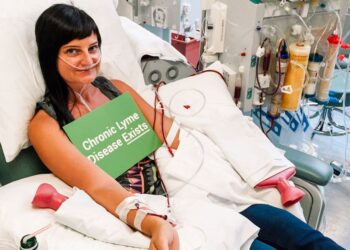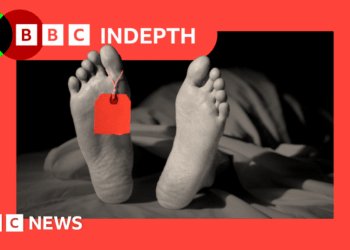Naval Daver, MD, who leads a number of acute myeloid leukemia (AML) research trials at MD Anderson Cancer Center in Houston, looks forward to a future where the treatment for AML is truly personalized, with individualized immunotherapy driven by advances in technologies like artificial intelligence. “That time is not far off,” he said.
“In the next 10 years, I would not be surprised if we have truly personalized and individualized therapies, whether they’re immunotherapies, targeted therapies, or combinations of those,” Daver said.

Daver, a professor of medicine and director of the Leukemia Research Alliance Program at MD Anderson, said the first successes for AML with cellular therapies, such as chimeric antigen receptor T cells, could happen within 5 years.
On the front lines of leukemia research, Daver has led more than 100 clinical trials over the course of his career at MD Anderson and now serves as the principal investigator (PI) on about 25 trials. His current trials are split between investigator-initiated trials that he leads at MD Anderson and larger national or international studies that he is leading or co-leading with anywhere from 10 to 100 sites.
Value of Investigator-Initiated Studies
Investigator-initiated studies are research opportunities that often come out of preclinical work that pinpoints synergistic combinations or that tests existing treatments. These studies may not be seen by pharmaceutical companies as financially beneficial, or they may be viewed as high-risk or too early in the process, Daver said.
“The investigator-initiated trials are really, for us at MD Anderson, the most impactful,” Daver said. “By far, in the leukemia department, we run the most investigator-initiated trials in leukemia in the world, probably two- to threefold more than any other center.”
Investigator-initiated work is critical to moving the field of leukemia forward, Daver said. He works closely with various preclinical labs at MD Anderson to find potentially synergistic combinations that are worth testing in the clinical setting.
“Many of the major breakthroughs that have come in the leukemia field actually have been through these investigator-initiated studies, both in AML and in acute lymphoblastic leukemia,” he said.
This early research has the potential to become practice-changing in the field, as successful studies with 30-40 patients are often the foundation for large registration trials that result in new treatment options. For instance, Daver and Nicholas J. Short, MD, also of MD Anderson, led an investigator-initiated study testing the addition of the oral FMS-like tyrosine kinase 3 (FLT3) inhibitor gilteritinib to standard-of-care treatment with azacitidine plus venetoclax for patients with newly diagnosed AML who were considered unfit for intensive chemotherapy.
In the phase 1/2 setting, the combination produced high rates of complete responses and showed encouraging survival. It is now being tested in a larger, national trial — the VICEROY study co-led by Daver — that is currently enrolling patients. The study has the potential to establish the regimen as a future standard of care for frontline treatment in the setting of older/unfit AML, Daver said.
Similarly, the leukemia group at MD Anderson evaluated the first triple combination with a menin inhibitor in the treatment of AML. The all-oral SAVE regimen — revumenib, venetoclax, and the hypomethylating agent ASTX727 (decitabine/cedazuridine) — produced high rates of remission for patients with relapsed and refractory AML with menin-sensitive mutations in a phase 1/2 study. That combination is now being evaluated in a larger, multicenter registration study in the frontline setting, Daver said.
Balancing Research and Clinical Care
Daver splits his time between research, clinical care, and education and mentorship. During a typical week, he spends 2 days in the clinic, seeing around 20-25 patients on each day.
“The patients I see in clinic are very similar to the clinical trials I run, and many of them in fact come to me and our clinic specifically referred from many different parts of the country, or even outside the country, for a particular trial,” Daver said. “They often tend to be acute myeloid leukemia or myelodysplastic syndrome patients, many times with a targetable mutation such as FLT3, IDH1, or menin because those are the trials we have running that may only be available at MD Anderson or in a small group of centers.”
Research fills the bulk of his remaining time and includes not only overseeing patients on MD Anderson trials, but monitoring enrollment, efficacy and safety signals, and other developments as part of a trial’s steering committee or as PI or co-PI on multicenter trials. He also has weekly or biweekly calls with study sponsors and local PIs to troubleshoot hurdles they may be facing or to respond quickly to any positive or negative patient outcomes seen in a particular trial.
Daver also works closely with a small group of fellows and junior faculty who have been critical to assisting with writing publications of the research findings coming out of all these clinical trials.
But it is seeing patients experience remission that gives Daver his sense of purpose. “To me, the most rewarding, still, is when I see the individual patient who has had a very successful outcome, especially younger patients who have been referred to us from far-away sites. These are young individuals who have kind of run out of options and been told locally that there’s not much they can do or to consider hospice,” he said. “That’s really gratifying to me because that is something that probably I would not be able to achieve anywhere else in the country because we often get these trials 1-3 years before other sites.”
Reward of a Life in Research
Clinical trials were not something that Daver was initially interested in pursuing, he said. He completed medical school in Mumbai, India, and came directly to Houston, where he completed both his internal medicine residency and hematology-oncology fellowship at Baylor College of Medicine. His plan was to focus on clinical care, and he wanted to make a difference by seeing patients every day in the clinic.
But in his last year of hematology-oncology rotation at Baylor, he spent 6 months of his elective time at MD Anderson, where he became interested in emerging preclinical and early targeted research in AML with the potential to dramatically improve cure rates.
“That’s what got me very excited and passionate because at the time for a young AML patient, you were looking at about a 30%-35% potential cure rate in 2010. For an older AML patient, this was less than 10%. Now with the research, we have really improved on these dramatically,” he said.
Today, he is proud of the impact he can have with research. “Running a trial or getting a drug approved, there could be hundreds of patients a day that are being exposed and getting the benefit of treatment, and even if I never see them, I am, in a way, championing or pushing that. I like that you can have a bigger impact than what you can do yourself on a day-to-day basis,” Daver said.
That’s why Daver advises residents and fellows to consider getting hands-on experience in clinical care, teaching, clinical research, and lab research before deciding on which of these to focus on as a career path. They should also keep an open mind and consider less traditional medical pathways, including jobs in pharma and at the FDA, which can also be rewarding options that satisfy different lifestyles and expectations, he said.
Whatever path trainees choose, Daver said he is seeing increased excitement about new developments in hematology-oncology and in AML specifically.
“We used to try to treat AML as a homogeneous disease with high-dose standard chemotherapy and hope it would work. I think of that as a nuclear explosion where you just have to blow everything up and hope that the good survives more than the bad,” Daver said. “Now we’re moving into a sniper approach where we are able to identify particular targets and hit them hard, sparing, to a large extent, normal cells, resulting in a dual benefit of higher cure rates with lower side effects.”
Daver disclosed ties with Arog, Bristol Myers Squibb, Daiichi Sankyo, Pfizer, Gilead, Servier, Genentech, Astellas, AbbVie, ImmunoGen, Amgen, Trillium, Kite, Hanmi, Fate Therapeutics, Novimmune, GlycoMimetics, Novartis, Jazz, Celgene, Syndax, Shattuck Labs, Agios, and Stemline/Menarini.
Source link : https://www.medscape.com/viewarticle/day-life-clinical-trialist-drives-next-gen-aml-care-2025a1000g64?src=rss
Author :
Publish date : 2025-06-17 13:00:00
Copyright for syndicated content belongs to the linked Source.













